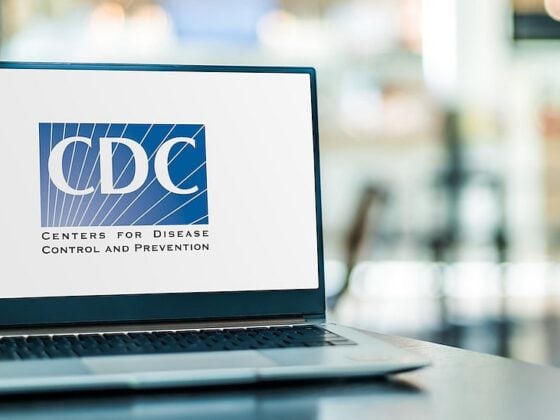About 170 million Americans – over half of the population in the United States – get health insurance through employer-based coverage or the private individual market. Just how the COVID-19 pandemic will impact the cost of that coverage is a question that’s currently being analyzed. Predicting costs is extremely challenging due to a rapidly changing environment, and uncertainty about whether the federal government will offer support for COVID-19 related losses.
… a number of variables could affect 2021 health insurance premiums, and one report estimates increases from a low of four percent, to as much as 40 percent.
The one constant of any analysis is this: quickly containing the coronavirus outbreak will help contain costs, and avoid other calamities such as people no longer being able to afford insurance, or drowning in medical debt when costs are shifted to them. COVID-19 is placing a heavy financial strain on hospitals, as evidenced by recent announcements of layoffs in a number of healthcare systems. Especially in rural America, where healthcare facilities are already struggling to stay open, an influx of COVID-19 cases could become the proverbial straw that breaks the camel’s back. Medical services could become even scarcer, whether you have insurance or not. There’s a lot at stake.
A report produced for the state of California’s insurance marketplace projected private insurers nationwide could pay between $34 to $251 billion dollars for testing and treating COVID-19 over one year. The report’s authors noted that even the high end of the cost range might be low. Costs estimates cited in a Peterson-Kaiser Family Foundation issue brief range from $56 to $556 billion in COVID-19 costs over a two-year period.
Indeed, COVID-19 has ripped through lives and resources with staggering speed, making the higher end costs seem more likely. When the California report was written in late March, confirmed coronavirus cases in the U.S. numbered some 94,000, and the death toll was at 1,400. A few weeks later, as of April 16, confirmed cases had climbed to 667,801, with the death toll numbering 32,917. With no certainty of the rate of infection due to a lack of testing, a wide range of scenarios must be considered. Will the virus slow-down, or a second-wave surface? How many people will eventually need hospital care, what level of care will they need? Will supplies and personnel be available to treat them?
What goes into setting 2021 rates?
Insurers are currently developing their rates for 2021, and will be submitting them to state regulators for review and approval in the next two months. The regulatory process requires rates to be based on expected costs in 2021, not the unexpected costs being incurred now. If the pandemic is confined to 2020, theoretically, 2021 premiums won’t be impacted. But a number of variables could affect the final outcome, and the California report estimates 2021 premiums could rise from a low of four percent, to as much as 40 percent. Here are the factors regulators will consider:
- Pandemic costs could prove overwhelming even to large insurers who have experienced strong profits in recent years. Estimates of around $20,000 for a typical pneumonia hospital stay pales in comparison to the $72,000 estimate for a severe COVID-19 case. No insurer planned on this explosion of costs, nor the magnitude of cases. If insurers can show their reserves have taken a significant hit, regulators could allow a rate hike.
But some analysts point to the ample capital reserves held by the insurance giants to absorb pandemic losses. Large cost increases would force insurers to use capital reserves to pay claims, but some actuaries aren’t anticipating the need for sharp rate increases. Predictions about ongoing medical expenses, absent a prolonged pandemic, aren’t radically changed.
- Will the pandemic spill into 2021? A rate hike can be based on a fair assumption that COVID-19 expenses will be incurred in 2021. At this time, experts predict the peak of the pandemic to be this spring/summer, but rationale for a rate hike would exist if people continue to get sick, testing and/or a vaccine becomes widespread, or insurers are obligated to pay more of the cost of care, as in the waiving of cost sharing for testing.
- Will elective surgeries postponed in 2020 lead to more or less of these procedures in 2021? Insurers will pay for relatively fewer elective surgeries and other medical care in 2020 due to the need to focus on the pandemic. With fewer claims being paid out, insurers could temper their COVID-19 related costs. It’s also possible that 2021 will bring a surge in elective surgeries, leading to increased claims payments. But the size of the any surge will be affected by how many people stop seeking medical care altogether because they’ve been priced out of the market.
- Will Congress help insurers cover pandemic losses? Industry and employer groups are making the case for Congress to set up a special reinsurance program to cover some pandemic costs, or a risk corridors program to keep gains or losses within reasonable ranges. Without this government help, these groups say that their increased costs will end up being borne by consumers paying higher premiums, or in the worst case scenario, dropping their coverage altogether because it’s not affordable. Smaller and less profitable insurers risk insolvency, affecting access to health care and decreasing competition to keep rates in check. Losses of private coverage would also likely lead to large influxes of Medicaid enrollees, straining state and federal budgets. This could be avoided if government support helps people keep the insurance they already have without paying higher premiums.
As this terrible pandemic continues to create grieving families and a suspension of business as usual, the steps to sustain and reform our healthcare system take on even greater significance. The actions we take now will reverberate for some time to come. It’s important we get them right. The immediate tasks at hand are to support the medical teams treating the sick, and to stop virus spread. Stay home, stay safe, and pay attention to the political and social debates that literally affect living and dying.



